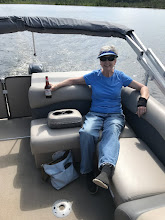
On our last day and night over Thanksgiving, we happened upon a desert pebble shelf providing boondocking with other RVers. Sitting a short distance above, sat the 1890’s boomtown and mine of Hedges, later renamed Tumco. It is now a historic and protected site of the Pichaco Recreation Area but run by the BLM on the far eastern border of California just north of I-8. Stated to be one of the earliest gold mining towns in California there is very little that remains of the once-bustling town of over 500 which sported residences, a hospital, two cemeteries, and saloons.





Early in the morning’s best light it was an interesting walk-around. I took time to photograph mementoes of an earlier life and time in what was a very inhospitable area. The miners worked for between $2-3.50 a day but since the homes they built sat on company land, they owed a monthly stipend for rental of the site. The gold was mined via use of cyanide and the waste was deposited into large cylindrical metal sediment pools. Once the mine closed, those were abandoned with their contents intact, lying in forlorn solidified heaps and lumps. Much of the town site is overrun with the ooze of these sediments and weather has made interesting patterns of what now looks like a volcanic ash flow.




It’s always an intrigue for me to wander through evidence of times past and wonder about those who trod this soil before me. One can imagine the noise and constant dust from the mine and living in such close proximity; it was mere footsteps out one’s door to go to work. There wasn’t much around these parts during those times—a small settlement at Yuma, 30 miles and a day away. The Southern Pacific RR punched their line through in 1877 which completed the line from Yuma to Los Angeles and which initially spurred the activity here since it is within two miles of the mine. Mining finally came to an end in 1942 with WWII and in 1949 the last residents wandered away and left Tumco a ghost town.






There is more of the mine area to explore when we return and Marc can go along with me. There is an information kiosk in the parking area with brochure pages giving the history of the site. It’s a short jaunt from Yuma at the Olgilby Rd exit north off I-8 and there are signs denoting its location. The numbered walking tour of the ruins is about 1.5 miles and is not a strenuous hike; vehicles are not allowed on mine property. For rock hounders, the area is also full of unusual minerals of note in the boondocking area, there for the picking.



































